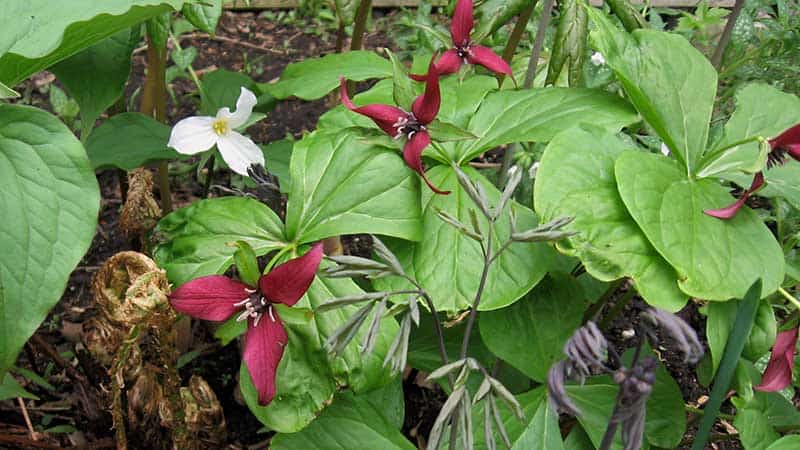Before the leaf canopy fully opens to shade the forest floor in woodland gardens, perennial spring ephemerals put on their show of delicate blooms. They’re called “ephemeral” because their presence above ground is fleeting — they bloom quickly, produce seed and then disappear, leaving only their roots to carry on underground. These beauties may be fleeting, but they’re worth incorporating into your own garden if you can provide conditions sympathetic to their growing needs.
“Purple pulpits and trilliums” discusses two popular spring-blooming natives: Jack-in-the-pulpits (not an ephemeral; plants produce red berries in late summer) and trilliums.

A fondness for ferns
Over the years, I’ve planted a few ferns in the back of the garden where it’s mainly shady and often damp in the spring. They provide a textural contrast to the hostas and epimediums that grow there, too. My favourites are Christmas fern (Polystichum acrostichoides) and cinnamon fern (Osmunda cinnamomea), and I’ve had some success with holly fern (Cyrtomium falcatum), too, although every year or so one fails to return. The most stalwart of the bunch is ostrich fern (Matteuccia struthiopteris), which can be an aggressive spreader, depending on your growing conditions. (It and garlic mustard duel for dominance in the far corner where nothing much else grows.)
Ostrich fern does have its fans, though. Jodi de Long of Nova Scotia writes about her long history with these ferns in “Fiddleheads for spring.”
Making the case for biodiversity
Sad to say, I’ve witnessed a few acrimonious discussions among gardeners regarding the inclusion — or exclusion — of native and non-native plants in home landscapes. “In defence of inclusive biodiversity” by Marianne Willburn in the recent issue of American Gardener, published by the American Horticultural Society, makes a thoughtful, well-argued case for encouraging native plants, but not at the expense of demonizing all non-native species. “Strict orthodoxies will keep us endlessly fighting natural processes and curating toward an ever-in-the-distance, species-perfect landscape,” she writes. “And in our righteous fight to keep what is, we just might miss the critically important lesson Darwin sought to teach us: The miracle of adaptation.”
More garden-related news
• West Coast Seeds in British Columbia is offering a cosmos seed mix called “Dr. Bonnie Henry Pollinator Blend.” All proceeds of sales will go to Food Banks Canada. Dr. Henry is the province’s provincial health officer. So far, $200,000 has been raised.
• Atlas Obscura has an intriguing item about a new cemetery in Surrey, B.C., that also includes a vegetable garden, a pollinator meadow and beehives. “There’s this underlying sense of burials being a sale-focused transaction,” says Trevor Crean, co-founder of Heritage Gardens. “There’s so much emphasis on death and dying at cemeteries. We’re trying to shift the mindset to being the kind of place where you’d actually like to spend time.” Produce is given to people who visit the grounds.
• Earth Day was first celebrated 51 years ago on April 22. To find out how to celebrate every day, go to earthday.ca for ways to conserve, enhance, and protect the environment.
Another tale of kale
Lynn in Nova Scotia sent us this comment about growing kale, prompted by last week’s newsletter item about the vegetable.
“Kale and I have had a love/hate relationship over the years. I have come to enjoy it, but only when it is fresh from the garden. Because of deer, all my veggies grow in pots on my deck, so last year, after I harvested my spring spinach, I planted up the tub with Tuscan kale. It grew beautifully and I was excited until I realized cabbage moths had come to visit and laid babies. Their appetite is ferocious, so I placed a teepee of row cover over the pot. By picking off the worms religiously every day, I had kale fresh from the garden right up until December. This year, the row cover will go on much sooner. (P.S. Kale and bacon is a match made in heaven.)”








